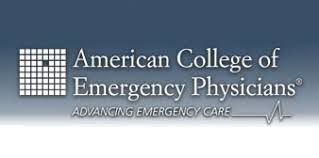The Centers for Medicare & Medicaid Services (CMS) announces the availability of a new initiative for Accountable Care Organizations (ACOs) participating in the Medicare Shared Savings Program. The new ACO Investment Model is designed to bring these efforts to to rural and underserved areas by providing up to $114 million in upfront investments to up to 75 ACOs across the country.
The ACO Investment Model will give Medicare Accountable Care Organizations more flexibility in setting quality and financial goals, while giving them greater accountability for delivering quality care efficiently, said CMS administrator Marilyn Tavenner.
“We are working with these organizations to make necessary investments that encourage doctors, hospitals and other health care providers to work together to better coordinate care and keep people healthy,” Tavennaer said.
Through its Innovation Center, CMS will provide up front investments in infrastructure and redesigned care process to help eligible ACOs continue to provide higher quality care. This will help increase the number of beneficiaries – regardless of geographic location – that can benefit from lower costs and improved health care through Medicare ACOs.
Continue Reading
Today, the Centers for Medicare & Medicaid Services (CMS) issued a proposed rule that would update fiscal year (FY) 2015 Medicare payment policies and rates for inpatient stays at general acute care and long-term care hospitals (LTCHs). This rule builds on the Obama administration’s efforts through the Affordable Care Act to promote improvements in hospital care that will lead to better patient outcomes while slowing the long-term health care cost growth.
CMS projects that the payment rate update to general acute care hospitals will be 1.3 percent in FY 2015. The rate update for long term care hospitals will be 0.8 percent. The difference in the update is accounted for by different statutory and regulatory provisions that apply to each system.
The rule’s most significant changes are payment provisions intended to improve the quality of hospital care that reduce payment for readmissions, and hospital acquired conditions (HACs). The rule also includes proposed changes to the Hospital Inpatient Quality Reporting (IQR) Program. The rule also describes how hospitals can comply with the Affordable Care Act’s requirements to disclose charges for their services online or in response to a request, supporting price transparency for patients and the public.
“The policies announced today will assist the highly committed professionals working around the clock to deliver the best possible care to Medicare beneficiaries,” said CMS administrator Marilyn Tavenner. “This proposed rule is geared toward improving hospital performance while creating an environment for improved Medicare beneficiary care and satisfaction.”
The proposed rule asks for public input on an alternative payment methodology for short stay inpatient cases that also may be treated on an outpatient basis, including how to define short stays. In addition, the proposed rule reminds stakeholders of the existing process for requesting additional exceptions to the two-midnight benchmark.
Continue Reading
 The American College of Emergency Physicians (ACEP) and Florida College of Emergency Physicians (FCEP) have sent a formal response to Marilyn Tavenner, the Administrator and Chief Operating Officer of the Centers for Medicare & Medicaid Services (CMS), supporting CMS’ planned hearing to address Florida’s restriction of emergency department use to six visits per year for Medicaid beneficiaries which ACEP asserts is a violation of the prudent layperson standard. ACEP calls the hearing notice “a welcome commitment of federal oversight of beneficiary protections.”
The American College of Emergency Physicians (ACEP) and Florida College of Emergency Physicians (FCEP) have sent a formal response to Marilyn Tavenner, the Administrator and Chief Operating Officer of the Centers for Medicare & Medicaid Services (CMS), supporting CMS’ planned hearing to address Florida’s restriction of emergency department use to six visits per year for Medicaid beneficiaries which ACEP asserts is a violation of the prudent layperson standard. ACEP calls the hearing notice “a welcome commitment of federal oversight of beneficiary protections.”
Alex Rosenau, DO, FACEP, president of ACEP, and Michael Lozano, president of FCEP, issued a statement:
“Florida’s action is a violation of the prudent layperson standard that may result in serious and potentially deadly outcomes. Its use of the six-visit limit is yet another example of states using short-sighted approaches to saving money that can hurt the very people they are supposed to protect. As CMS itself has stated, Medicaid beneficiaries use the emergency department at an almost two-fold higher rate than the privately insured, but that is not inappropriate given their generally poorer health. At least two studies found that the majority of emergency visits by non-elderly Medicaid patients were for symptoms suggestive of urgent or emergent medical problems.
Continue Reading